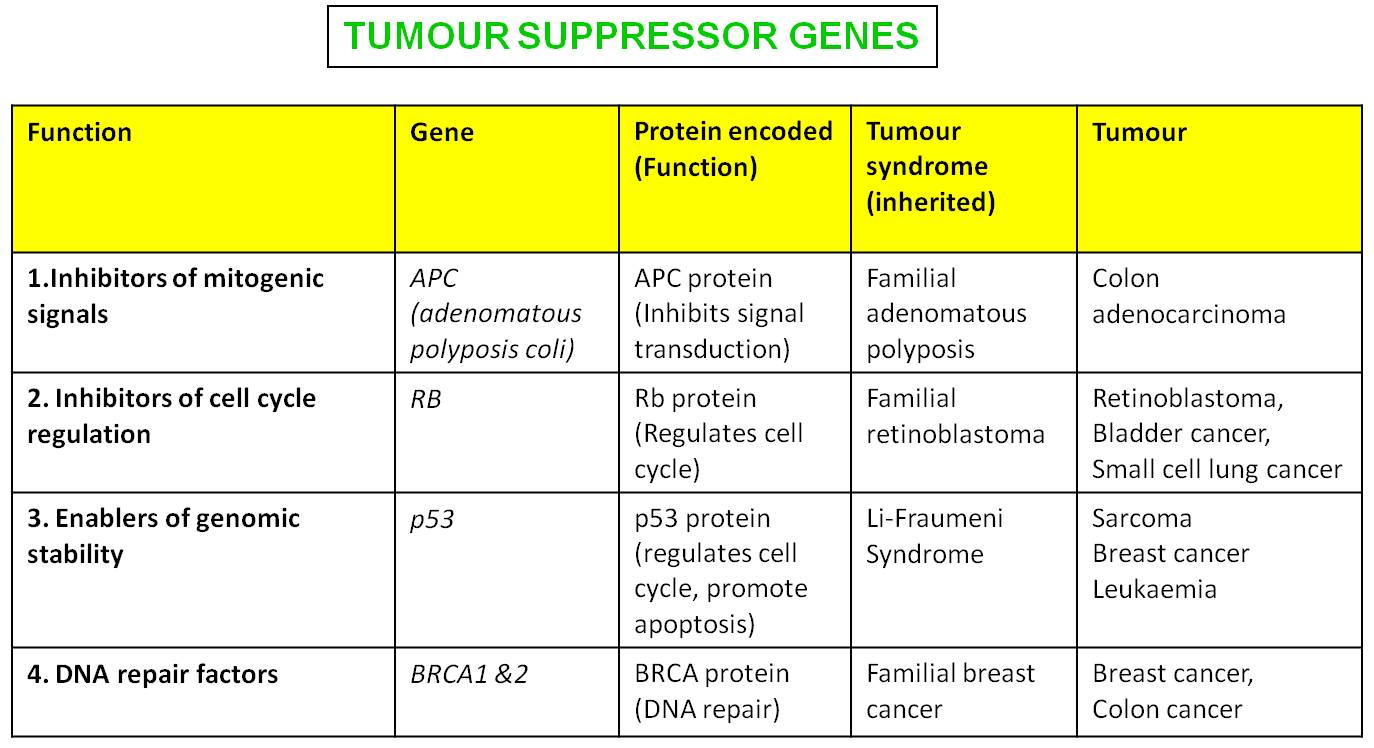Cancer cells are genetically-mutated cells that have gained the ability to form malignant tumours (undergone malignant transformation) they can break away from normal cellular controls and regulations.
- Self-sufficient in supply of growth factors
- Insensitive to inhibitory signals against cell growth and proliferation
- Resistant to apoptosis (cell death)
- Immortal
- Able to stimulate formation of new blood vessels for blood supply (angiogenesis)
- Able to invade surrounding tissues and metastasize to distant organs
In order to transform to a cancer cell, the cell must overcome these major protective mechanisms:
(1) cell cycle regulatory checkpoints
(2) tumour suppressing mechanisms
(3) apoptosis (cell death) &
(4) DNA repair mechanisms
Malignant transformation requires multi-step genetic aberrations (eg. point mutations, gene amplifications, deletions, translocations to chromosomal rearrangements.) In other words, many genes must be affected before it occurs.
Some of the key genetic aberrations involve two main groups of genes:
Many are involved in key events in the life of a cell: Cell cycle regulation, DNA repair and apoptosis. One such gene is p53, located on chromosome 17, which is a key tumour suppressor gene which encodes TP53, a protein responsible for cell cycle arrest and promotion of apoptosis as a response to DNA damage. This is the ‘gatekeeper’ of the cell, and plays a big role in guarding against abnormal cell proliferation and neoplastic transformation.
But what actually leads to malignant transformation? Please refer to pathology texts or your lecture notes for detailed examples.
- Inherited genetic aberration Eg, Inherited cancer syndromes, familial cancers
- Acquired genetic aberrations
- Aging – Accumulation of gene mutations over the years
- Physical injury – Radiation / radiotherapy
- Chemical carcinogens – Tobacco, Asbestos etc
- Biological – Chronic inflammation (Chronic liver cirrhosis: Hepatocellular carcinoma)
- Viruses – Several mechanisms exist. In some viruses, viral genes, when integrated into host genome and expressed, can drive the expression of oncogenes or inhibit the proper function of tumour suppressor genes. In other instances, viral infection drives polyclonal proliferation of lymphocytes, which are at increased risk of mutations and may potentially transform into malignant clonal populations. Examples of viral associations with malignancy are Ebstein-Barr Virus – Hodgkin lymphoma, Burkitt lymphoma, Nasopharyngeal CA; Human Papilloma Virus – Squamous cell carcinoma of the uterine cervix – please refer to your notes / texts for more important examples and the actual mechanism of viral oncogenesis
- Bacterial (Helicobactor pylori: Gastric lymphoma)
Here is a SUMMARY of cancer pathogenesis:

